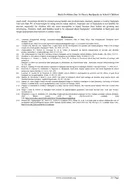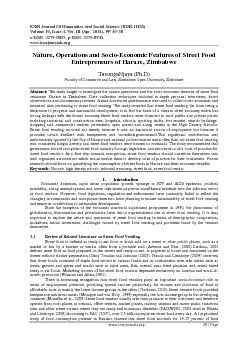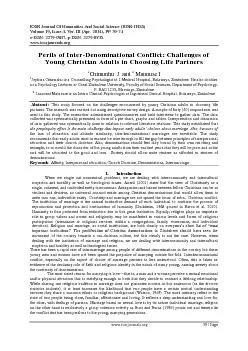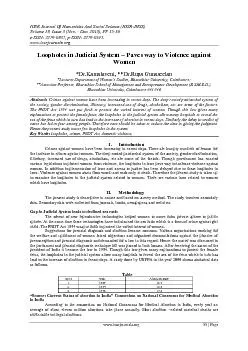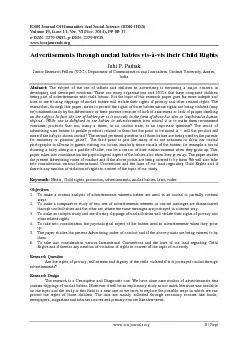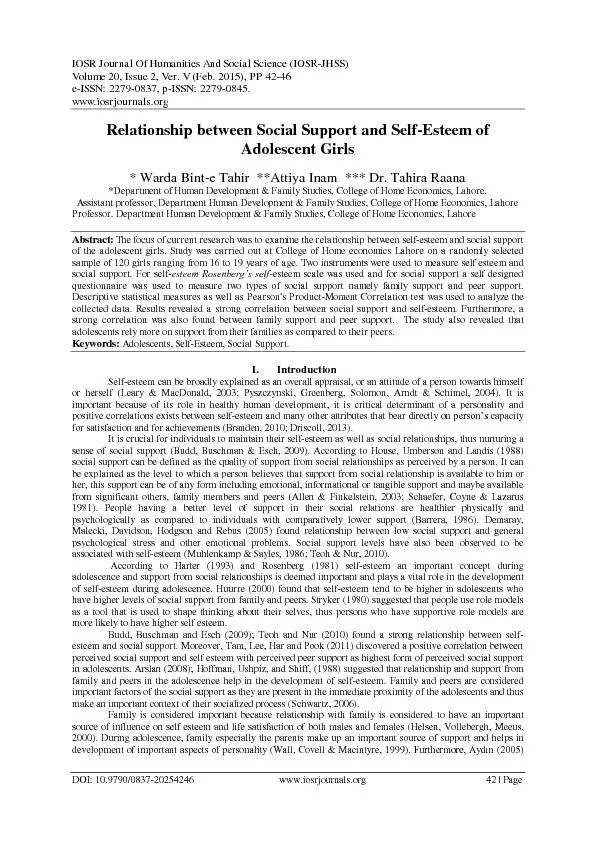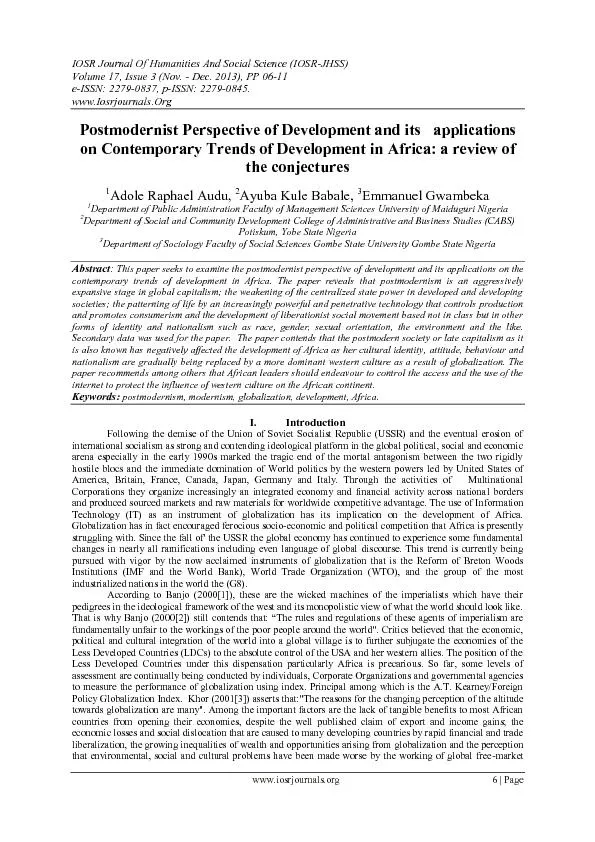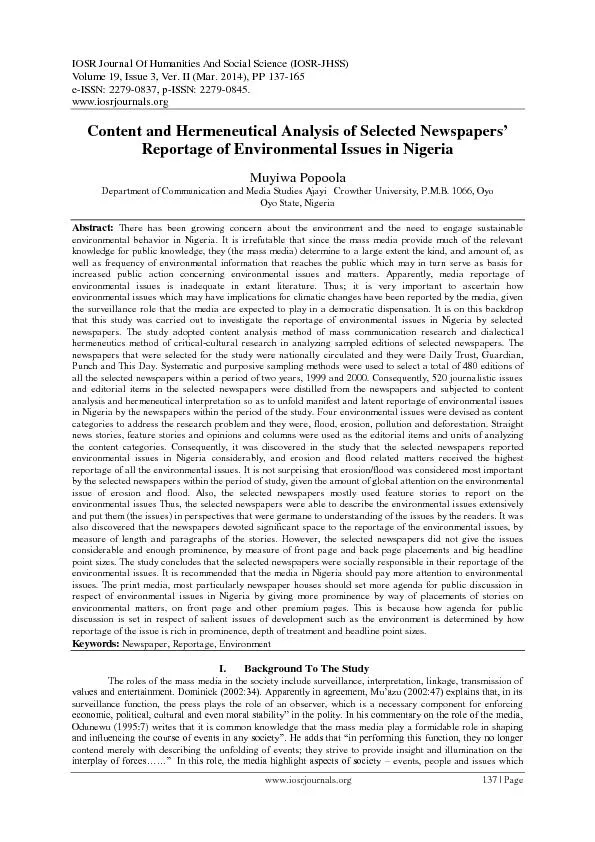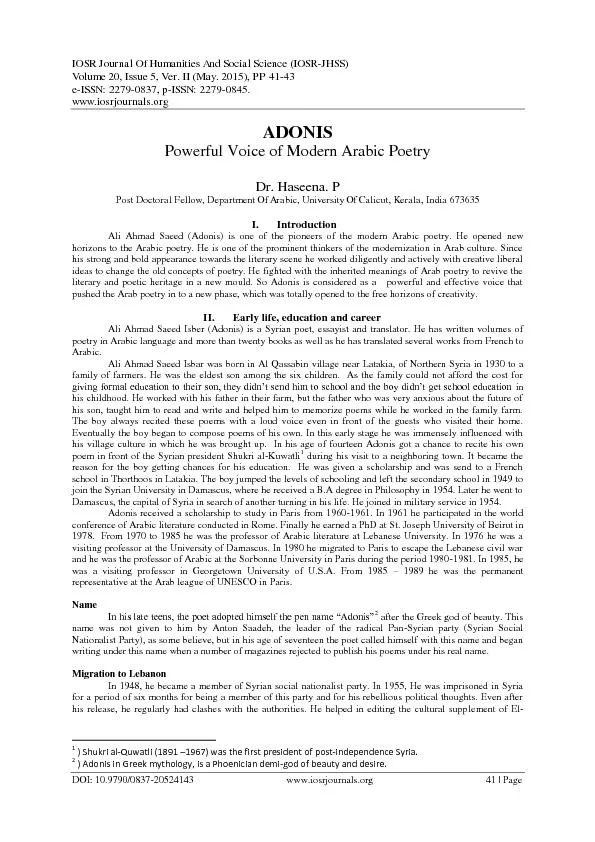PDF-IOSR Journal Of Humanities And Social Science IOSR JHSS Volume Issue May
Author : tatyana-admore | Published Date : 2014-12-28
Jun 2013 PP 22 ISSN 2279 0837 p ISSN 2279 0845 wwwIosrjournalsOrg wwwiosrjournalsorg 22 Page Back Problems Due To Heavy Backpacks in School Children Avantika Rai
Presentation Embed Code
Download Presentation
Download Presentation The PPT/PDF document "IOSR Journal Of Humanities And Social Sc..." is the property of its rightful owner. Permission is granted to download and print the materials on this website for personal, non-commercial use only, and to display it on your personal computer provided you do not modify the materials and that you retain all copyright notices contained in the materials. By downloading content from our website, you accept the terms of this agreement.
IOSR Journal Of Humanities And Social Science IOSR JHSS Volume Issue May: Transcript
Download Rules Of Document
"IOSR Journal Of Humanities And Social Science IOSR JHSS Volume Issue May"The content belongs to its owner. You may download and print it for personal use, without modification, and keep all copyright notices. By downloading, you agree to these terms.
Related Documents

